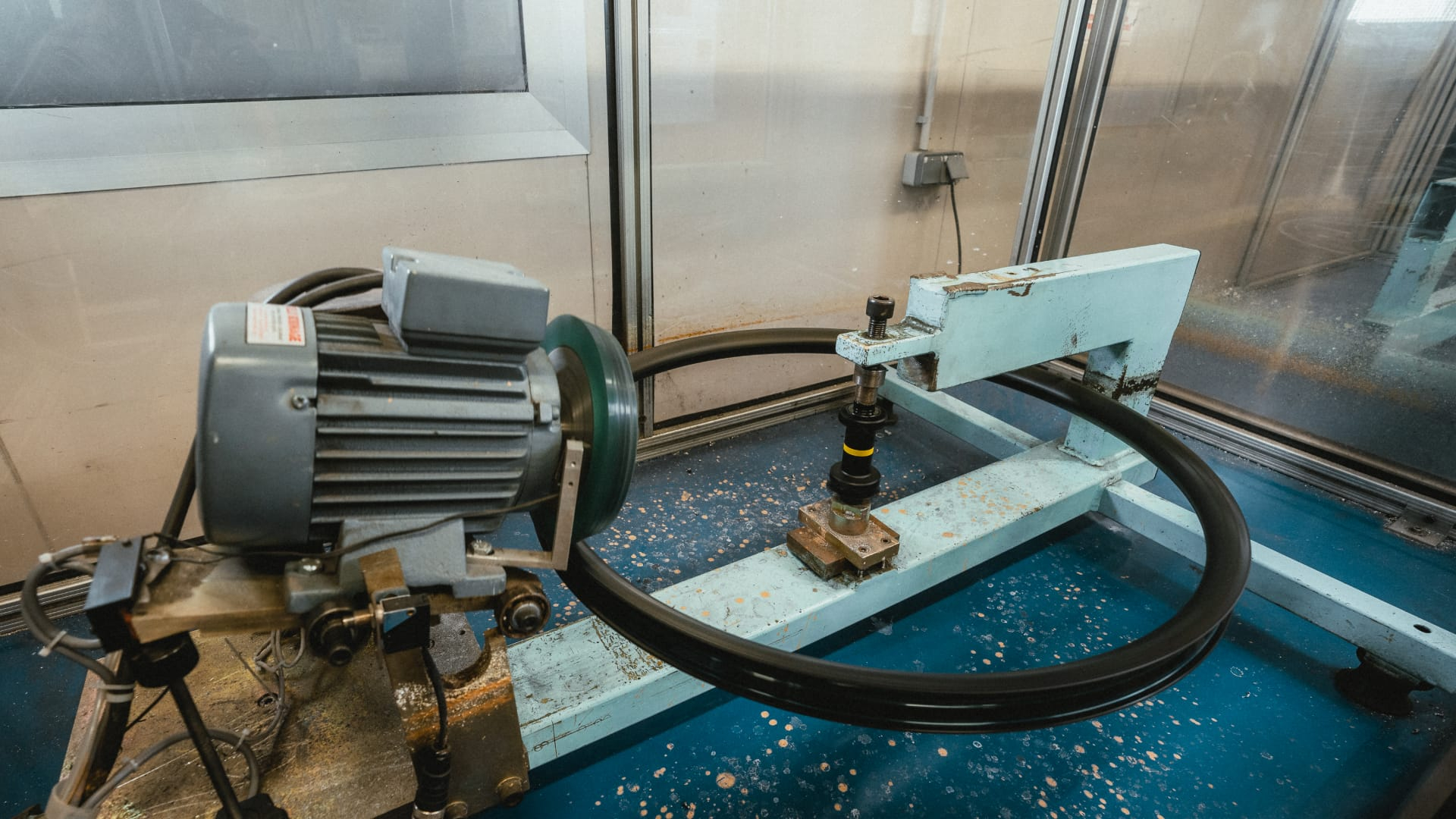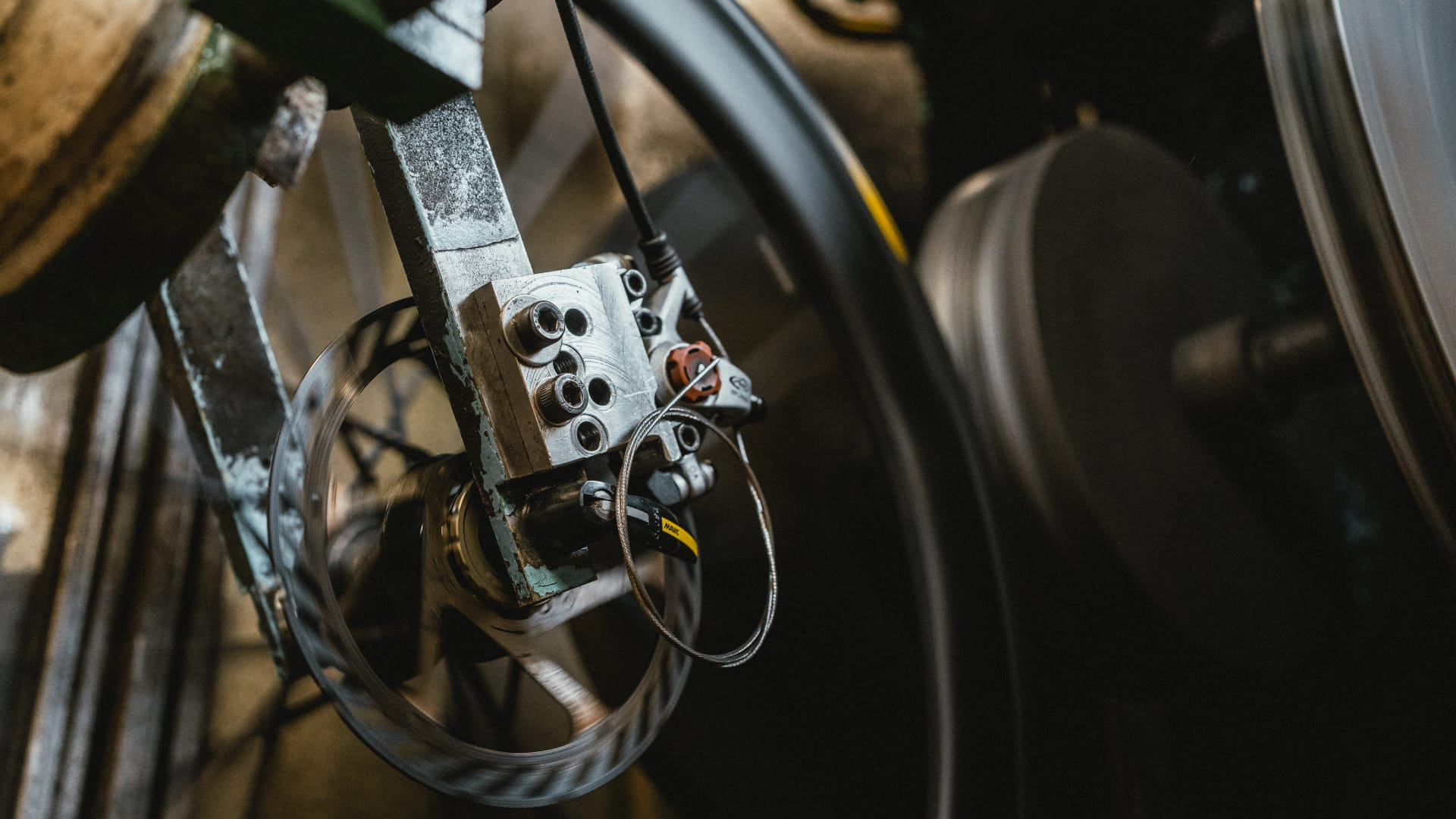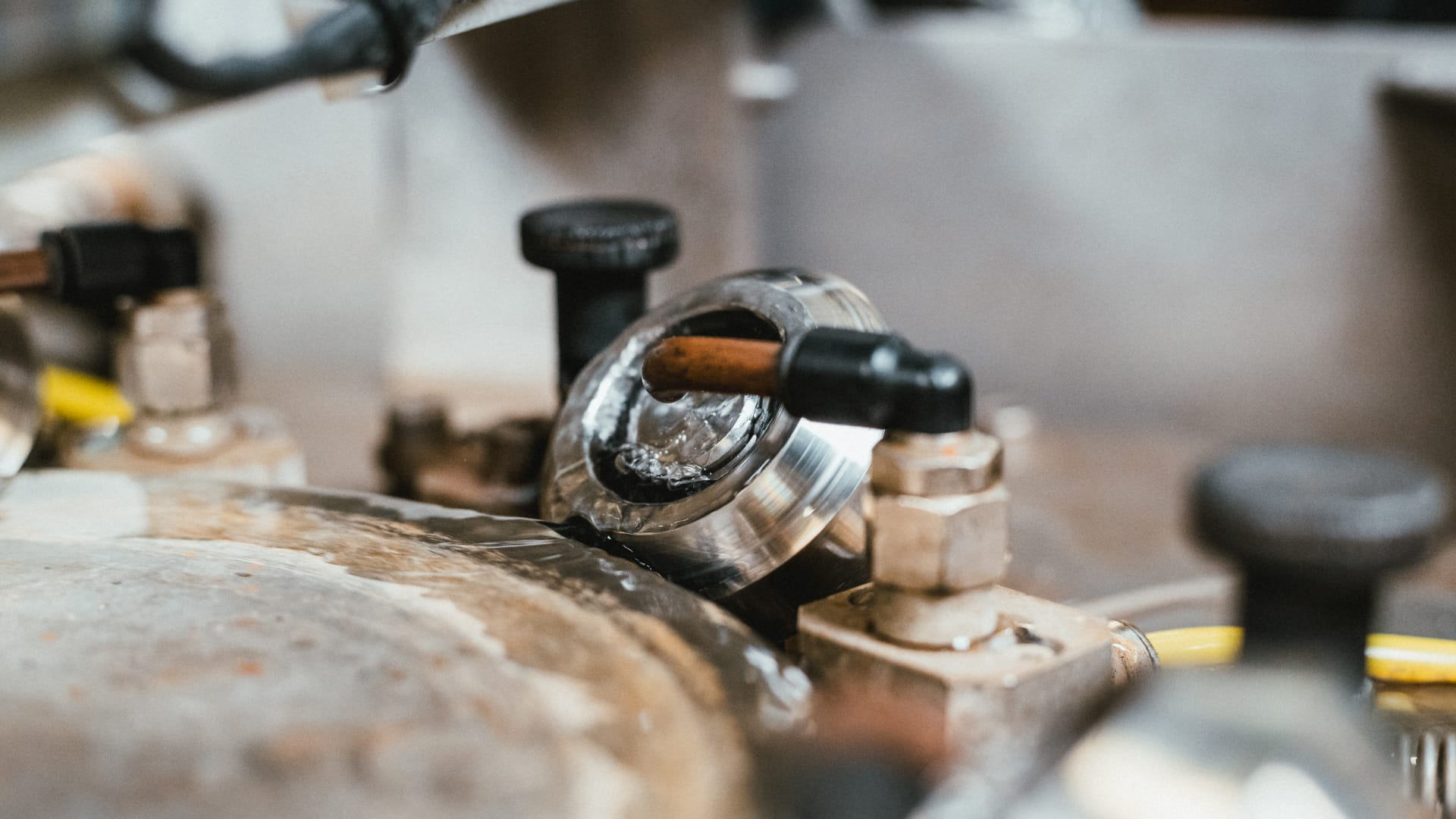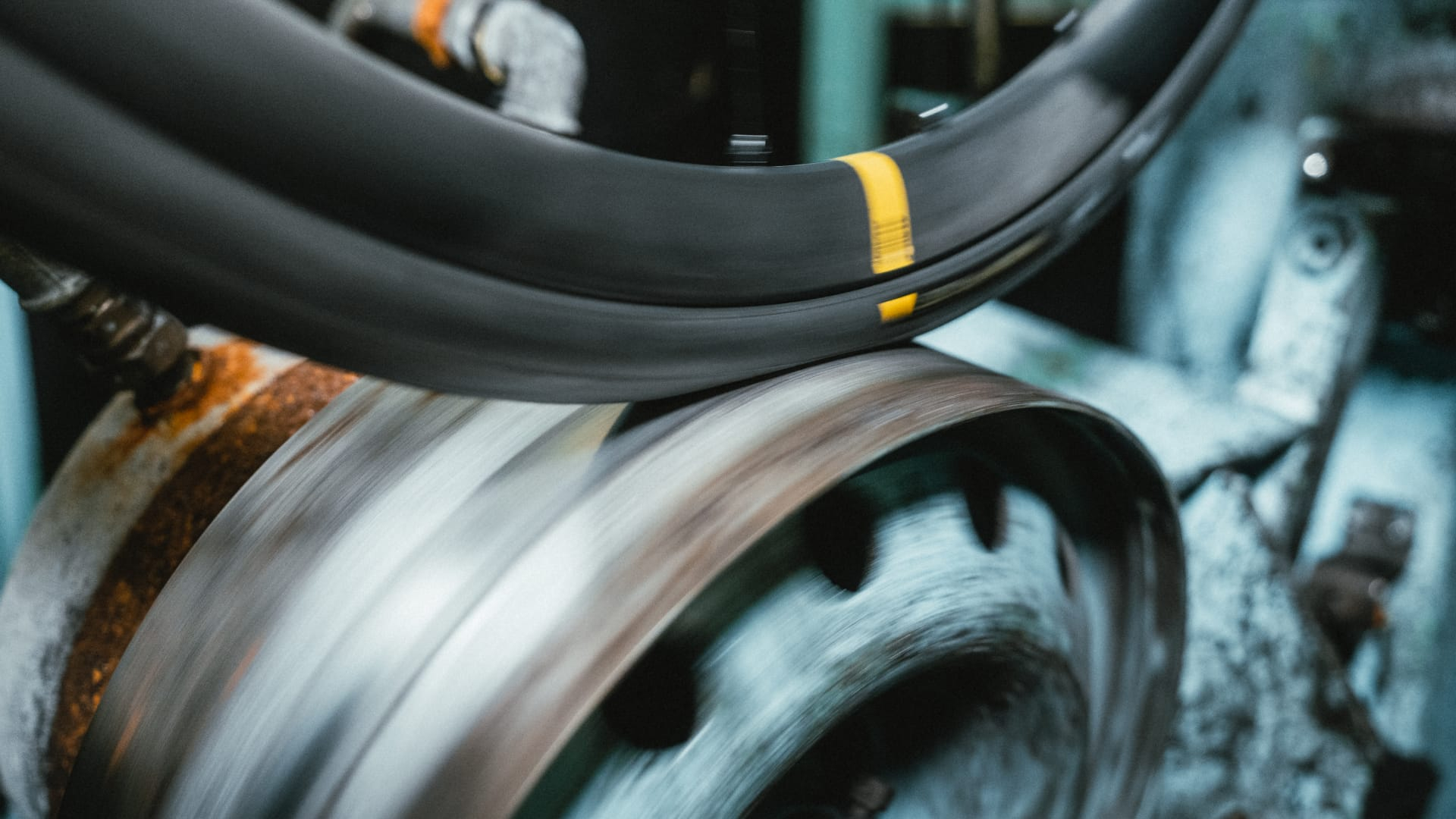
Lab tests
The importance of Mavic lab tests
Reliability is an essential value at Mavic. The robustness of our components always takes precedence over pure performance. Riding with Mavic means you can concentrate on your ride without worrying about your wheel.
Back in 1993, we decided to expand our static measurement laboratory with dynamic measurement machines.
Today, going through the laboratory is a sine qua non before field testing and marketing our wheels. Thanks to our various lab tests, we can check the precision and strength of each pair of wheels.
The aim is simple: to offer cyclists and mountain bikers reliable, durable and tried-and-tested models.
Resistance tests, impact tests, endurance tests... Everything is checked, dissected and pushed to the limit. It is during this testing period that any defects or anomalies can be detected and corrected by our teams.
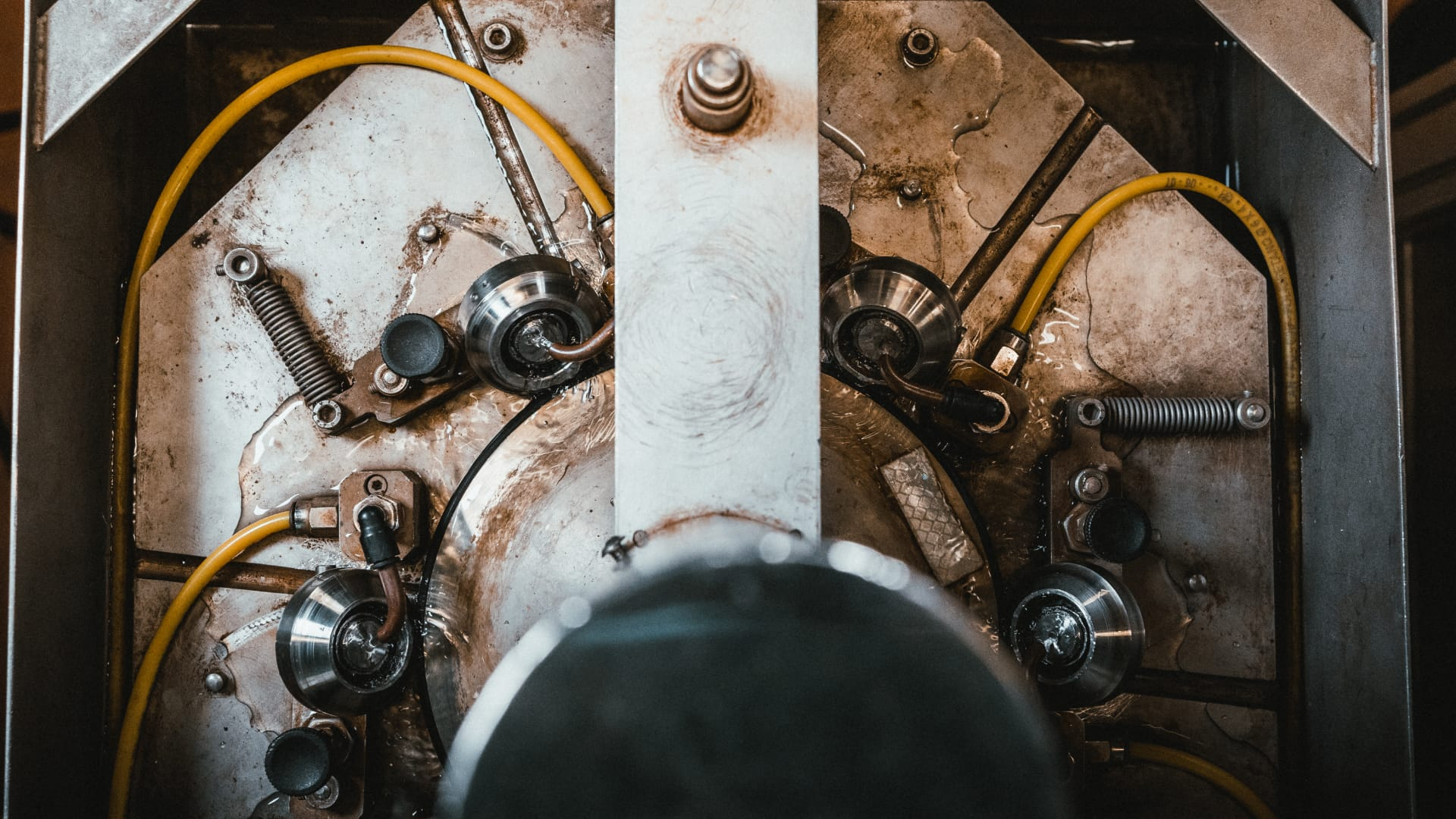
Testing as close as possible to the design stage
Located in Chavanod, near Annecy, in the heart of the French Alps, our Mavic Competence Centre houses all the facilities where our products are designed and developed.
The same site also houses our various evaluation laboratories. In total, over 175m2 are dedicated to our static tests and 360m2 to dynamic tests.
In-house tools to push equipment to the limit
The concentration of specific resources and advanced tools for testing is unique in the bicycle industry.
Mountain bikes, ATVs, Allroads, road bikes - every model is put through its paces. In total, we have almost 47 tests, simulating all the stresses (and more) that a wheel could undergo once mounted on the bike.
7000 km at more than 70 km/h, temperatures ranging from -10°C to +70°C, resistance to loads of 300 kg... Shock, rigidity or resistance tests, frontal or lateral endurance bench, each prototype is subjected to specifications and meets a list of predefined standards imposed beforehand.
Finally, after passing the 'laboratory test' stage, the wheel is validated in the field to confirm how it feels. Once out of the lab, each sample is tested by our teams and athletes, taking advantage of the idyllic and demanding setting offered by our mountains.
The pillar : Pascal Rampon
An evaluation and quality technician since 1995, Pascal is one of the pillars of Mavic Lab Tests. Over 5,000 wheels have passed through his hands and he spends hundreds of hours testing each new model.
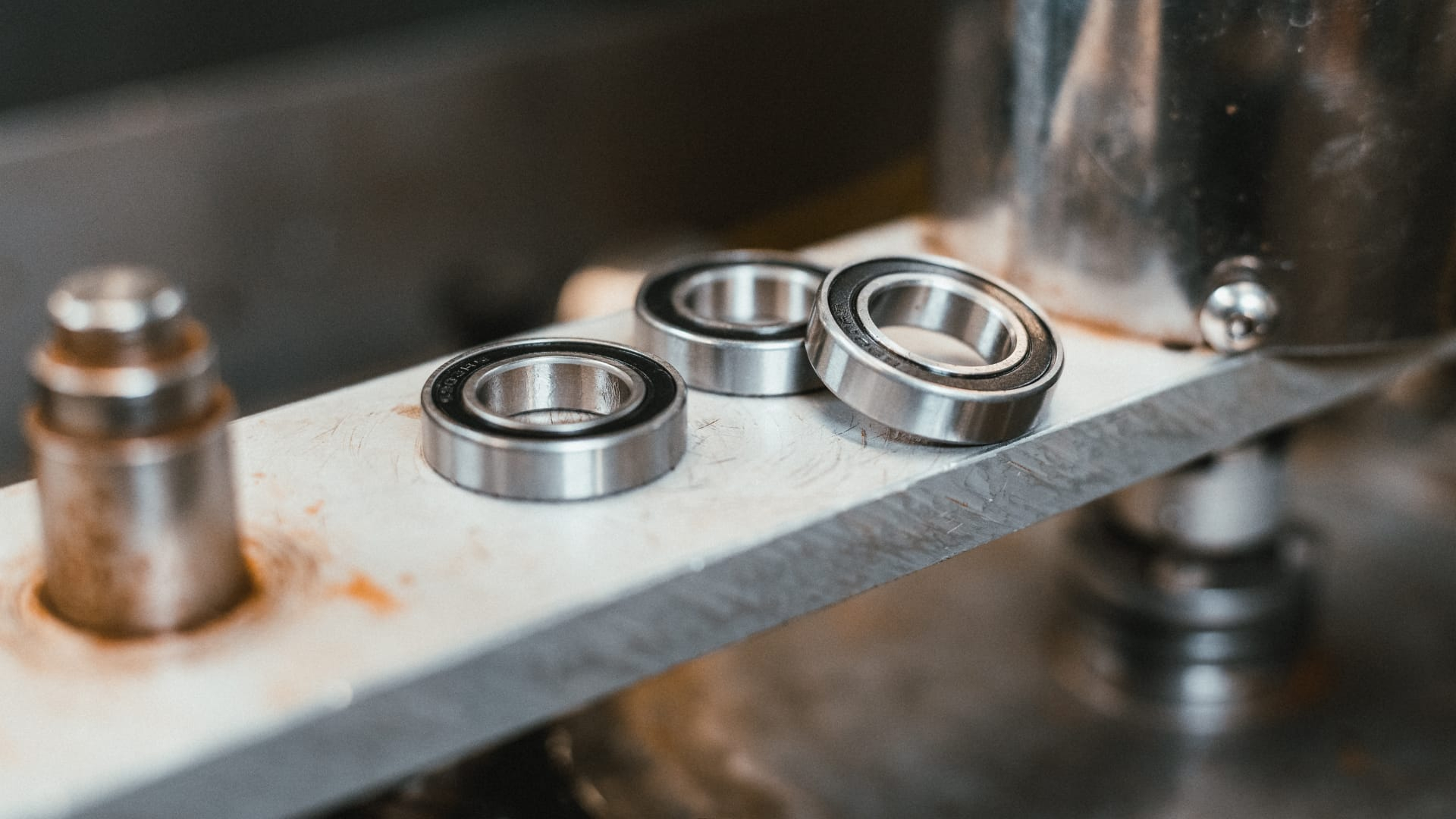
Our resistance tests
Bearing quality, braking, shocks... The main resistance tests carried out in our Mavic labs put the equipment through its paces.
Bearing tests
All the bearings we select follow drastic specifications. We test them, measure their dimensions and assess their quality on an ongoing basis.
We have developed a test bench to measure the quality of cartridge bearing seals: we run the balls for 24 hours non-stop, injecting water continuously. This is just one of the many tests we carry out on our bearings!
Braking test
The braking bench is used to test the strength of our wheels, from the spoke hangers to the bearings, which are subjected to high stresses, reproducing real-life conditions a hundredfold.
Whether with skates or discs, braking on a bicycle or mountain bike generates very high stresses, not to mention the levels of heating and heat from the very high friction caused by braking.
The measurement tool can be used to perform 750 braking operations in a row, alternating between 0 and 70 km/h non-stop.
Impact test
A wheel undergoes deformation in the event of a major impact (hole in the road, pavement, roots, rocks, etc). To guarantee its safety and strength, it is important to measure its deformations under stress.
The wheels must not break, dislocate or deform; they must absorb the impact to ensure that the rider maintains control and can avoid a fall as far as possible. These tests are standardised according to UCI rules, but Mavic pushes the measurement to 150% to anticipate the worst possible situation.
Our strength tests
Climate testing, impact testing... The most advanced resistance tests are carried out in our Mavic labs.
Climatic testing
All our carbon wheels undergo a treatment worthy of aeronautical equipment. Among other tests, our rims and wheels are enclosed in a climatic chamber. This is where cycles of high heat (+70°C) and intense cold (-10°C) are combined with humidity levels of between 0 and 100% for several days in a row.
The aim is to accelerate the ageing of the carbon fibre, measure variations in tension and so on, and 'prepare' the wheel or rim to undergo further tests and measurements as if it had already been in existence for several months or years.
Hub torque test
The torsion bench is used to check the resistance over time of our hubs and our spoke and disc hangers. The torque applied to the heart of a wheel is deliberately reduced.
Hubs have to withstand the lightning acceleration of the best athletes as well as emergency braking in the worst conditions to avoid a fall. To achieve this, we apply high forces over 100,000 cycles to guarantee the maximum long-term resistance of Mavic hubs.
Rut test
We have designed a special machine to simulate a wheel crash in perfect safety conditions.
The aim is to control the parameters and be able to compare the different results while always having the same base settings: weight, speed, angle, etc. In this way, we can guarantee that our wheels are highly resistant to extreme shocks and deformations.
This allows us to design and integrate wheels that can withstand the worst treatment under normal use, while also taking into account all the other parameters such as lightness, repairability, etc.
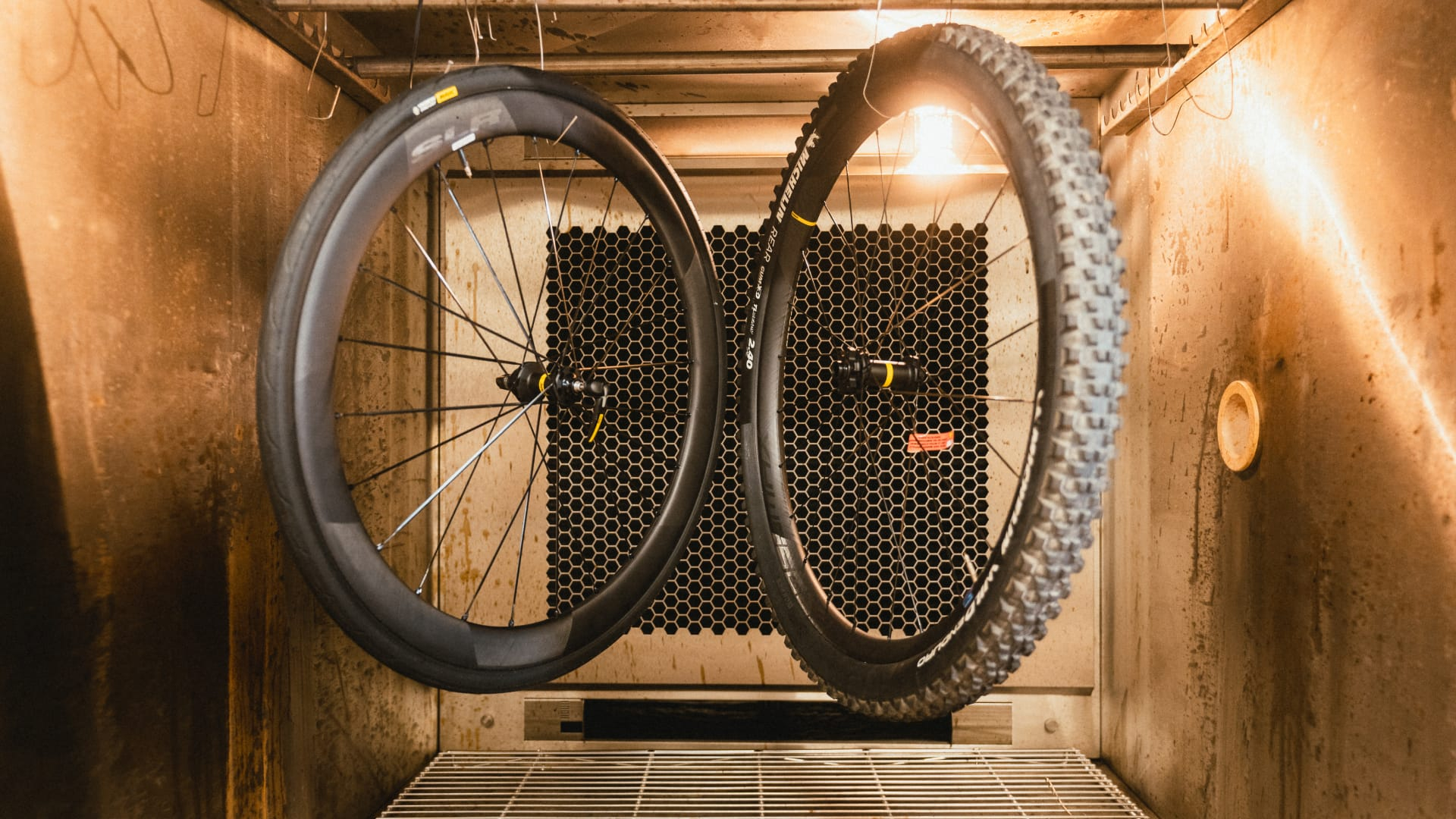
Our endurance tests
Dancer simulation, frontal or lateral endurance... The endurance tests carried out in our Mavic labs go right to the limit.
Dancer endurance test
The fatigue bench simulates 500 km of non-stop mountain climbing, like a very long ascent of an Alpine pass. Like all our lab tests, it is based on measurements taken in the field.
Lateral stress on the wheel and torsional stress on the rear hub are added together.
This allows us to check the ageing of a wheel's components over a short period of time and, if necessary, modify its parameters and construction.
Front-end endurance test
To test the wheel's resistance over time, we carry out this test on a laboratory bench (7,000 km at 70km/h in a few days), which is then completed by field tests in real conditions (5,000 km for a mountain bike wheel / 10,000 km for a road wheel).
Lateral endurance test
A 25kg ballast is applied to the rim with the wheel mounted horizontally, spinning continuously at nearly 50km/h. The first 300km are critical, but we pushed the test up to 1000km in this configuration, which is hard on the hub, spokes and rim.
